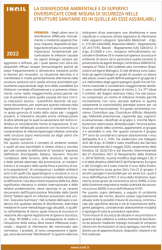Right to disconnect: Implementation and impact at company level Working
| ID 20969 | | Visite: 389 | Documenti Sicurezza Enti | Permalink: https://www.certifico.com/id/20969 |
Right to disconnect: Implementation and impact at company level Working / Working conditions and sustainable work
ID 20969 | 14.12.2023 / Attached
Introduction
Despite EU legislation regulating working time, occupational health and safety, and work–life balance, data from national and European surveys show that a high proportion of workers who are able to work remotely and flexibly using digital tools work long hours and are subject to health issues linked to work-related stress and burnout.
The rise in remote and flexible working during the pandemic and the increasing use of mobile digital tools, making workers more contactable, have accelerated the discussion around whether existing legislation remains fit for purpose to address the risks posed by the ‘always on’ culture in the workplace.
Previous Eurofound research has highlighted the scarcity of information on the implementation and impact of the right to disconnect at company level.
Based on a survey of employees and a questionnaire completed by HR managers in four countries (Belgium, France, Italy and Spain), this report sheds light on how the right to disconnect is implemented at company level.
Analysing responses from workers in companies with and without a right to disconnect policy, it assesses their experiences of receiving and responding to work-related communications outside contractual working hours; how many additional hours they work and why; and their work–life balance, health and well-being, and overall workplace satisfaction.
Policy context
As of spring 2023, there was no specific legislation at EU level on the right to disconnect. However, a range of existing EU directives contain relevant provisions, most significantly the Working Time Directive (Directive 2003/88/EC). This directive sets limits on working hours and regulates rest periods for all workers.
The European Parliament’s resolution of January 2021 (2019/2181 (INL)) called on the European Commission to bring forward legislation specifically on the right to disconnect, while acknowledging the key role played by social partners in negotiating on workplace matters.
In 2022, the European cross-industry social partners began negotiations on a possible framework agreement on telework and the right to disconnect, which were ongoing at the time of writing (June 2023).
Contents
Executive summary
Introduction
Trend towards more telework and flexible working
Policy context
About the report
1.National legislation and collective agreements
Coverage
Implementation
Sanctions
Specific provisions for the public sector
Collective agreements
2.Implementation of the right to disconnect at company level
Introduction
Methodology
Prevalence and implementation of the right to disconnect
Actions taken to limit the number of additional hours worked
3.Impact of the right to disconnect at company level
An ‘always on’ culture?: Patterns of and reasons for out-of-hours communication
Working hours
Work–life balance
Health and well-being
Satisfaction with working conditions
The right to disconnect: Overall assessment
4.Conclusions
References
Annex: Results of statistical analyses
Eurofound
Collegati
Diritto alla disconnessione | Legge 61/2021 conversione DL 30/2021
Decreto-Legge 13 marzo 2021 n. 30
Decreto Legislativo 8 aprile 2003 n. 66








































